Our company aims at the water demand of a domestic semiconductor industry: high-purity water process water consumption 35m3/h, process return water volume 30%, primary RO water 10m3/h, concentrated water reuse 6m3/h, combined with the raw water quality provided by the customer and the requirements for the produced water quality:
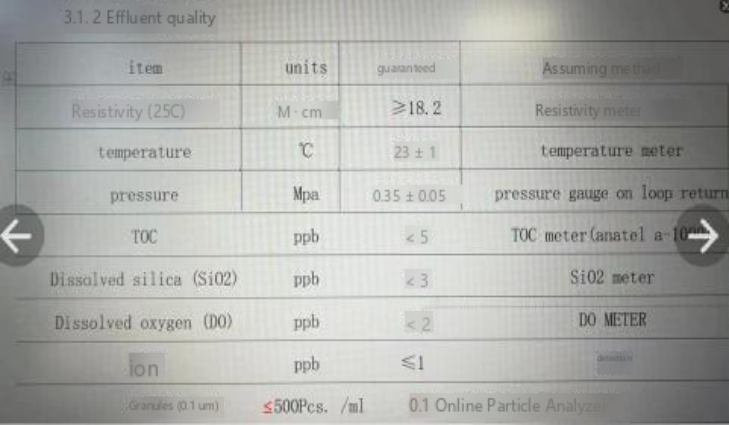
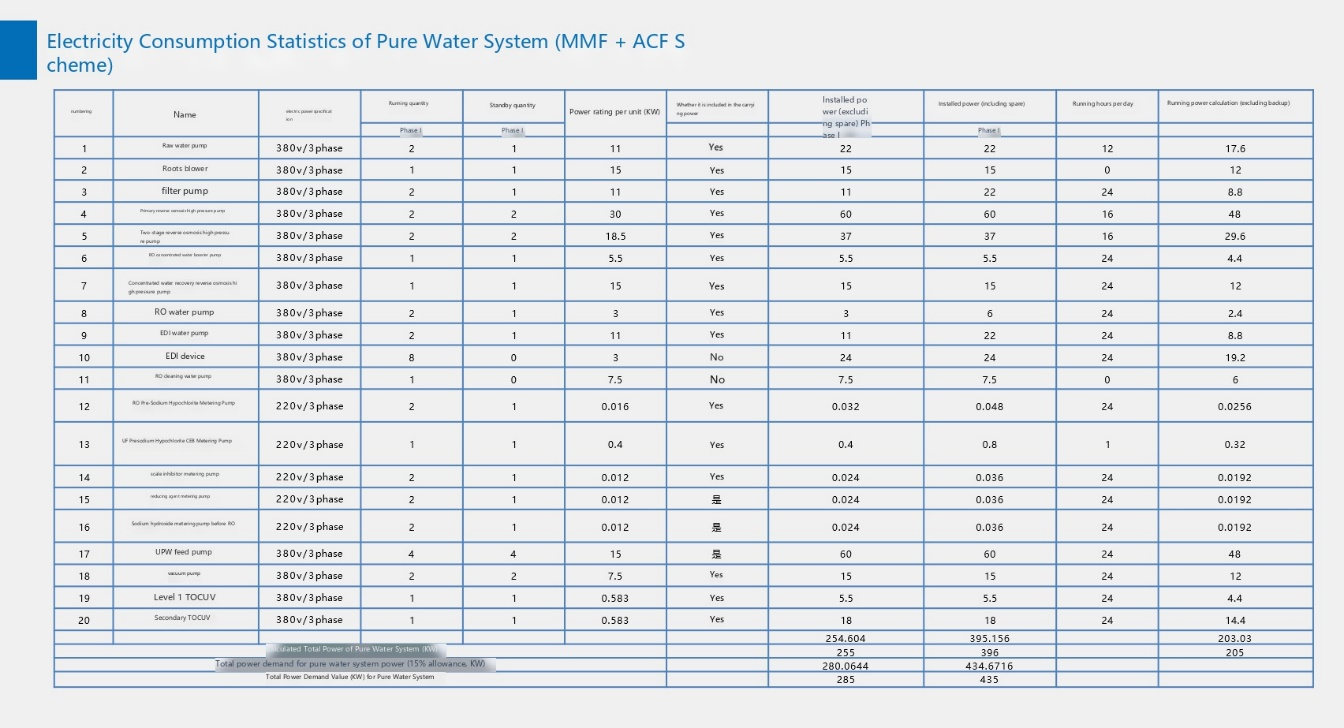
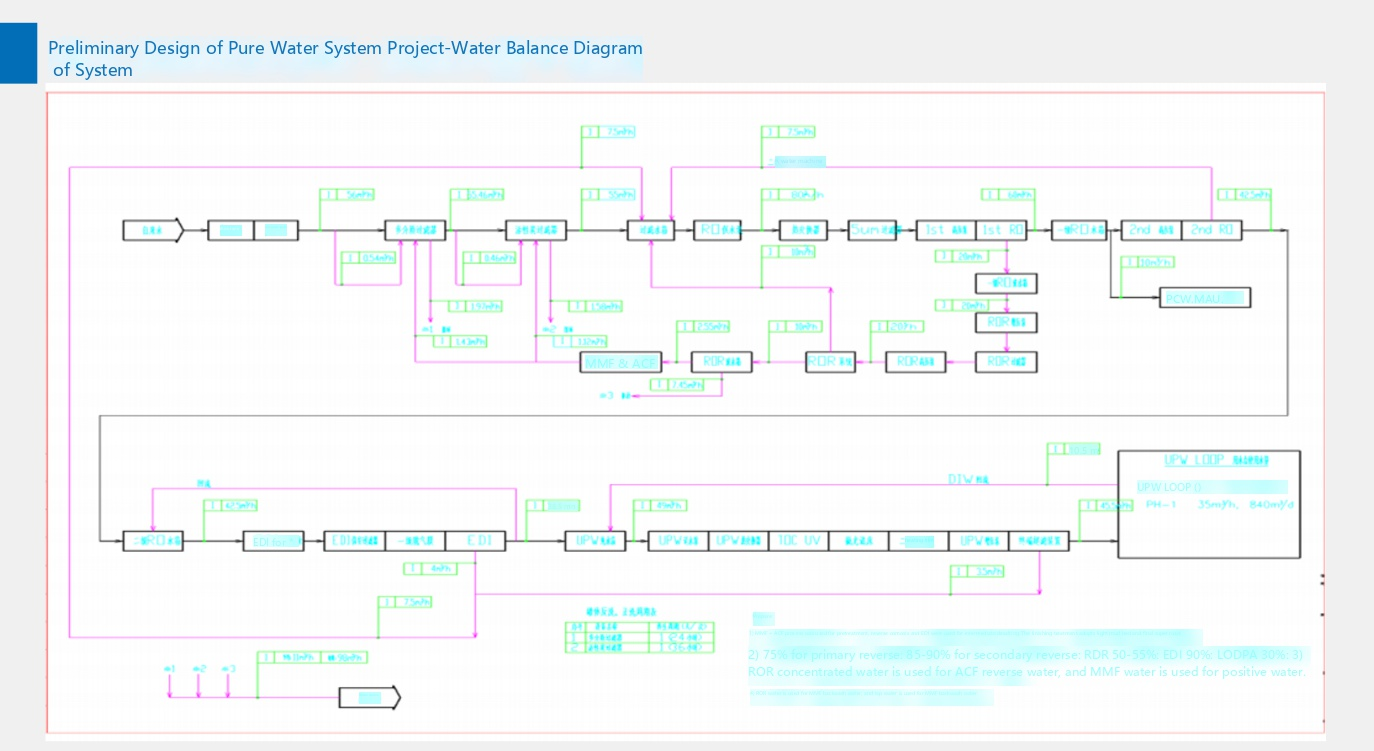
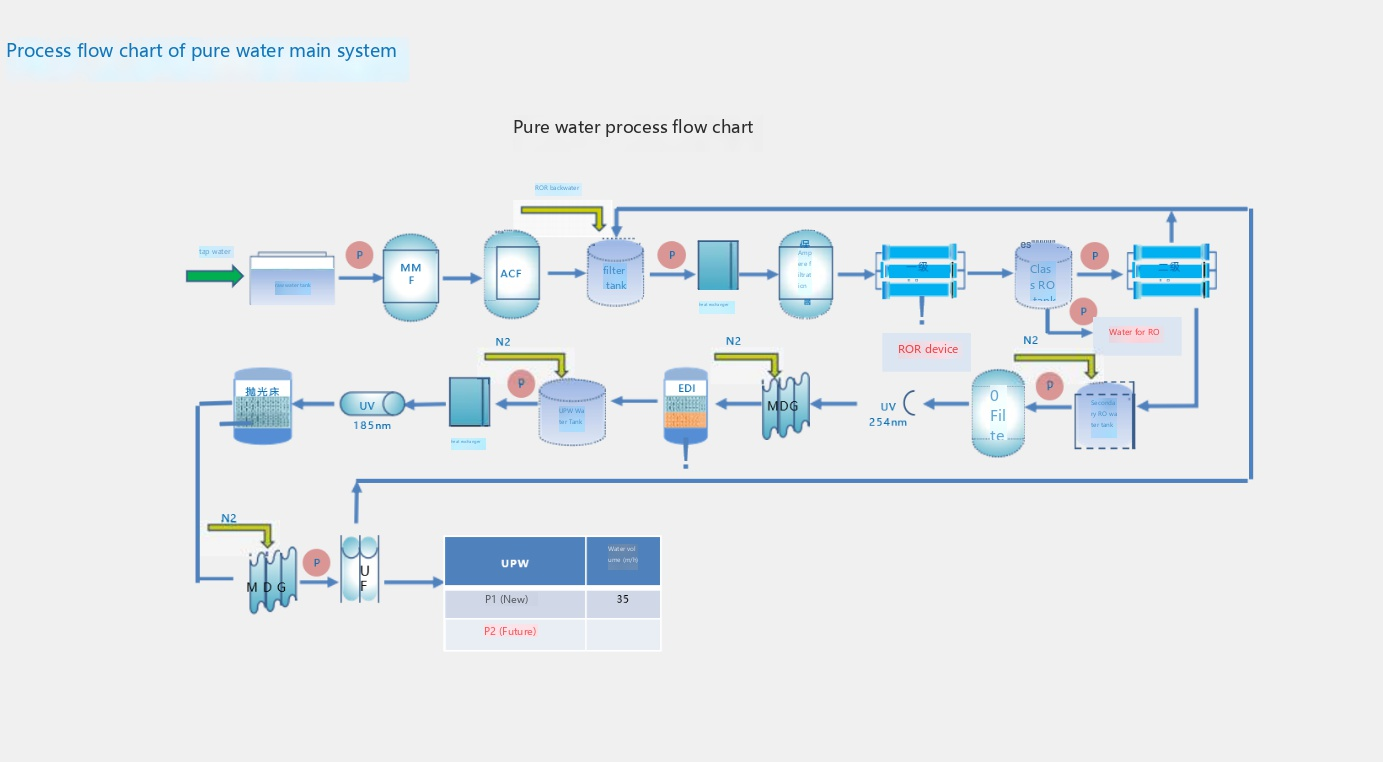
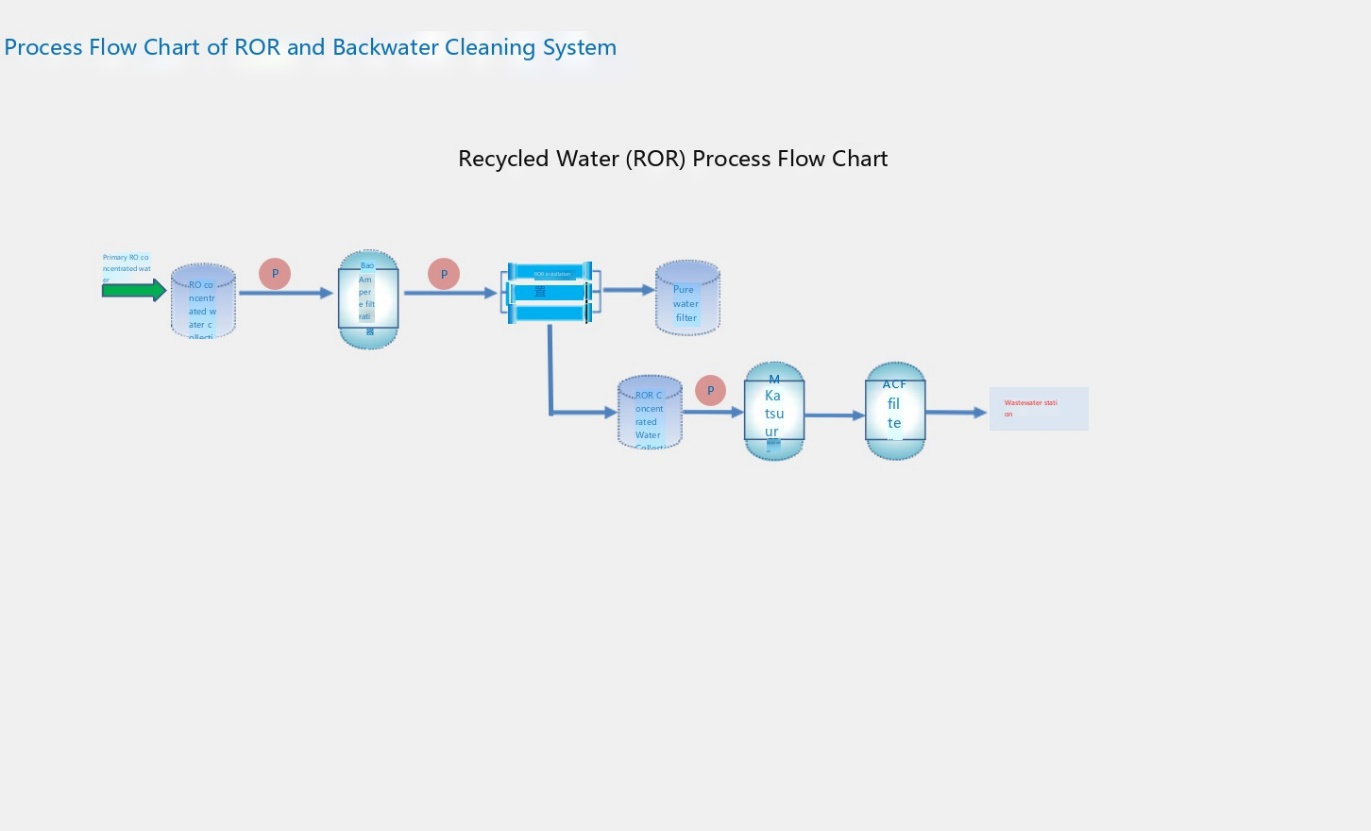
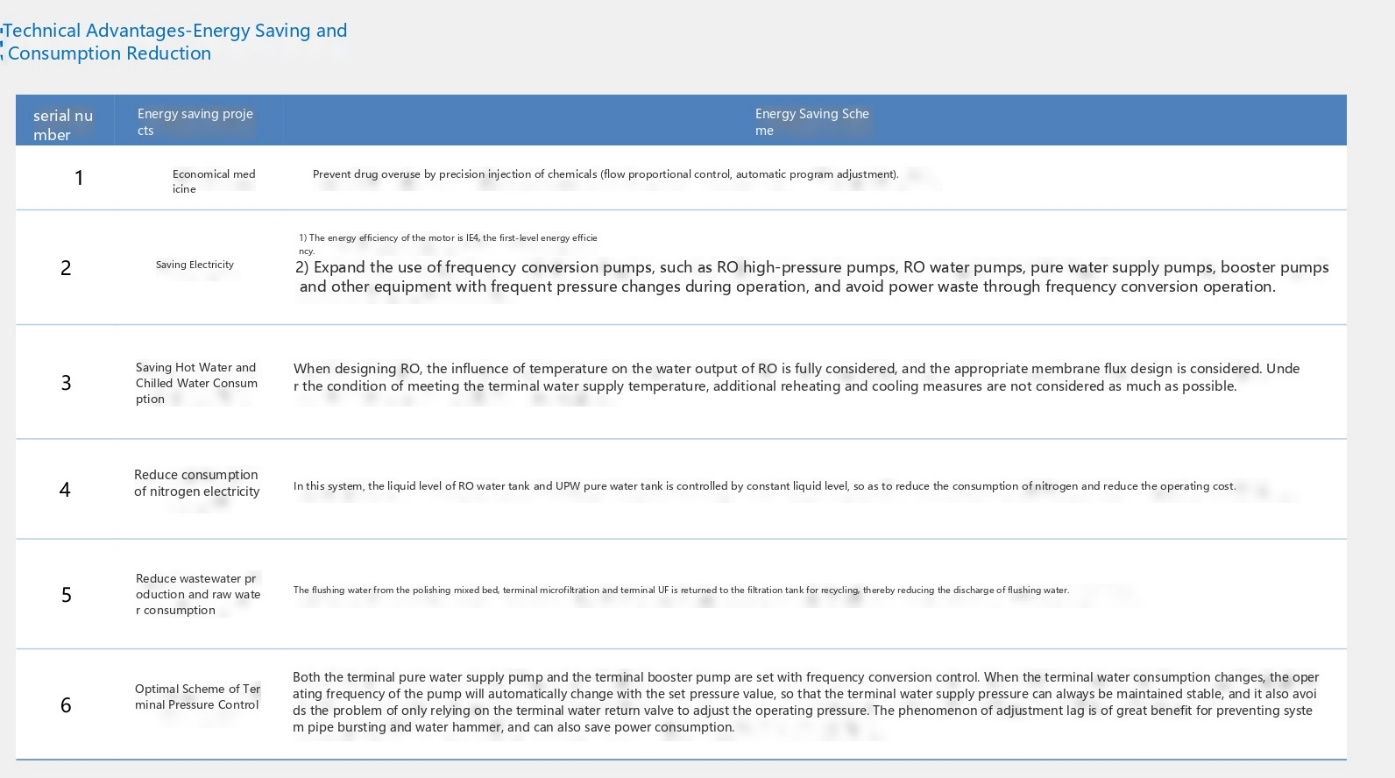
The project system was implemented in accordance with the design steps. From the time the system was delivered to the customer to date, the water output of the equipment system has met the standards and the equipment system is in good operating condition. The design steps adopt the following concepts:
1. RO is also equipped with startup flushing, shutdown flushing and timed flushing, which can avoid RO membrane contamination to the greatest extent
2. The water inlet valve and exhaust valve of the mixed bed are equipped with small-caliber slow-opening and slow-closing electric valves, which can better avoid the impact on the tank and pipeline
3. Three pressure transmitters are set at the terminal water pump outlet, loop water supply, terminal loop return water, RO water supply and degassing membrane outlet, which can prevent system pressure buildup and water hammer damage caused by pressure transformer failure to the greatest extent
4. In addition to being used for regeneration and backwashing of MMF and ACF, the excess RO concentrated water is used to supplement the water of LSR, which can not only improve the water quality of the LSR system, but also reduce the water consumption of LSR, and avoid excessive RO concentrated water flowing back to the filter water tank to cause TOC enrichment
5. In the design of the loop return water pipeline, the automatic valve can be automatically switched according to the return water quality of the loop, avoiding the lag of manual switching, and also avoiding the impact of poor return water quality on the water supply of the entire system
6. A design of one magnetic pump and one pneumatic diaphragm pump is used during chemical unloading. The pneumatic diaphragm pump is used in the early and late stages of operation to avoid gas entering
Damaging the magnetic pump by entering it, while using a magnetic pump can quickly unload chemicals and avoid the disadvantage of excessive vibration in pneumatic diaphragm pumps
7. The RO cleaning system is equipped with a metering pump for dosing and a pH meter for monitoring to avoid possible harm to people caused by manual dosing
8. Back pressure valves and corresponding pipelines are set on the RO water supply to avoid the situation where the pressure is kept in the closed pipeline when the pipeline is over-pressured, which can protect the pipeline and equipment to the maximum extent.
9. Leakage detection devices are set up in several key areas, such as lifting stations, chemical rooms, etc., so as to check the leakage at any time and avoid accidents
10. Acid mist alarm device is also set up in the acid metering room. When hydrochloric acid leaks in the system, it can be discovered and handled in time
11. In the screen setting, the operating status of various equipment in the process and the important parameters that need to be monitored by the equipment are placed on one screen. Through this screen, the operating status of the entire system can be clearly seen, without having to view the operating status and parameters through each screen. If the operating status of a single system or equipment is required, you can enter the next level menu to view it
12. The liquid level of the raw water tank, filtered water tank and RO water tank is set in sections. The corresponding number of equipment is opened in different sections, which greatly increases the flexibility of the system water production and avoids the impact of the system start and stop at the same time.
13. Voltage meters, ammeters and power meters are set up in each station room, and the power consumption of each station room is uploaded to the host computer, so that the power consumption of each station room can be fully grasped, providing support for energy saving and consumption reduction
14. The operating status, operating voltage, current, operating frequency, inverter temperature and other parameters of each frequency conversion controlled water pump can be uploaded to the host computer, so that the operating status of each frequency conversion pump can be fully grasped
15. The control circuit terminal adopts spring type wiring
16. It is equipped with detection of inverter power, output voltage, control card temperature and cooling fan, and makes alarms for current and frequency deviation to control the equipment
More comprehensive protection
17. Miniature circuit breakers replace fuse terminals
Fuse is a fuse that burns out after a short circuit, overload or other overcurrent fault. It is a protection achieved by thermal effect. A new fuse needs to be replaced before it can be used again. Sometimes there is no suitable fuse for replacement
18. Add temperature detection equipment to the copper busbar in the cabinet
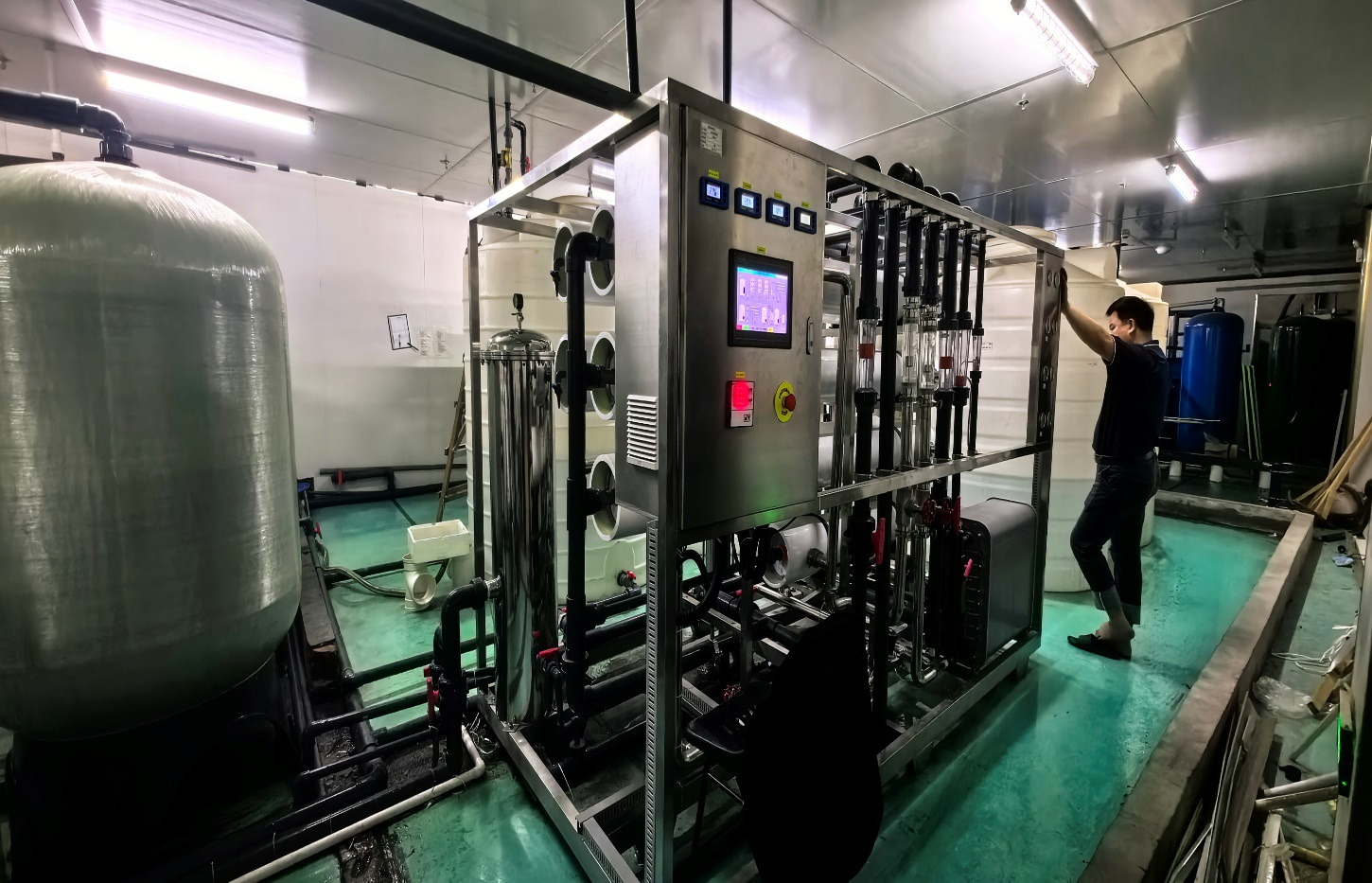
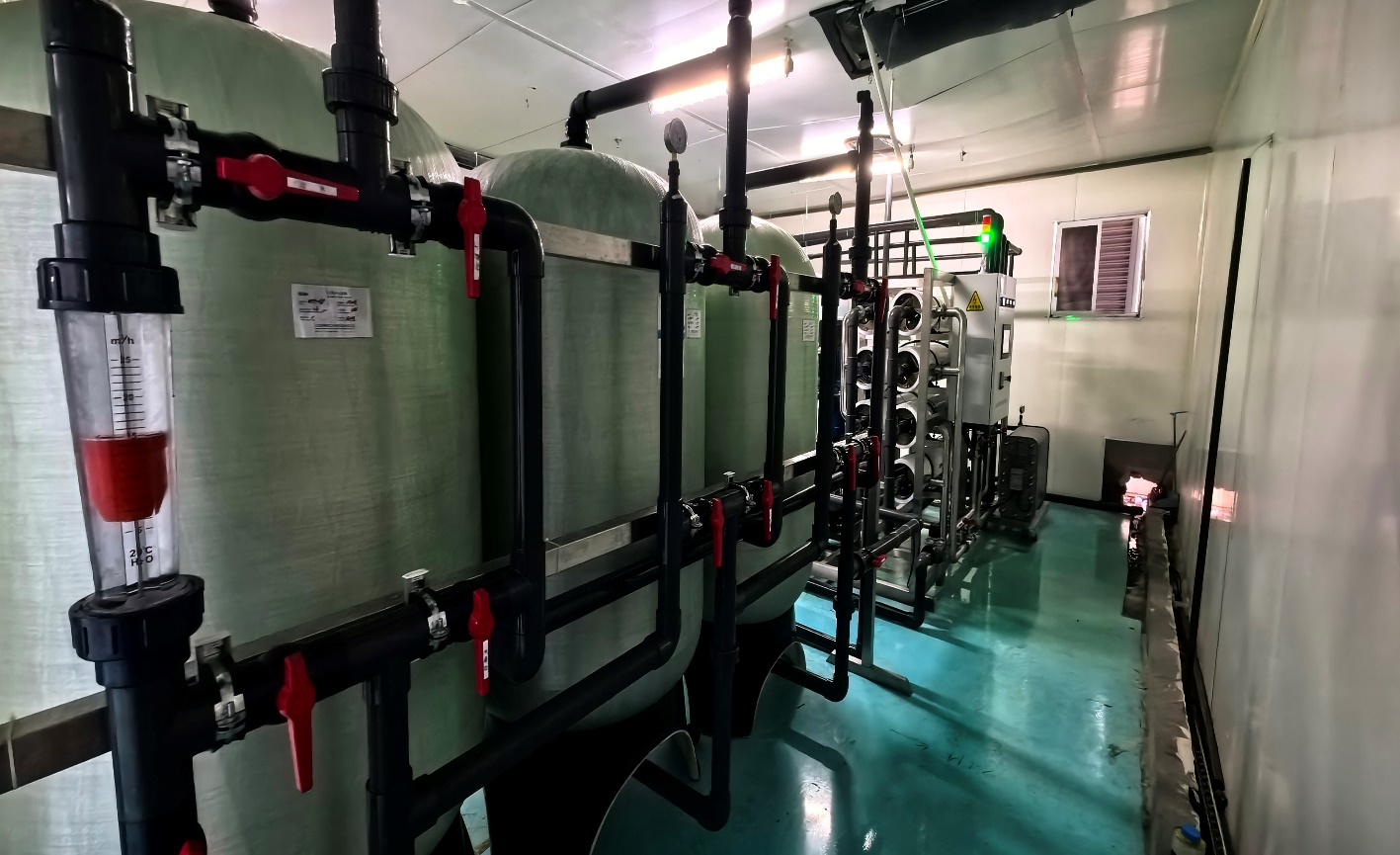
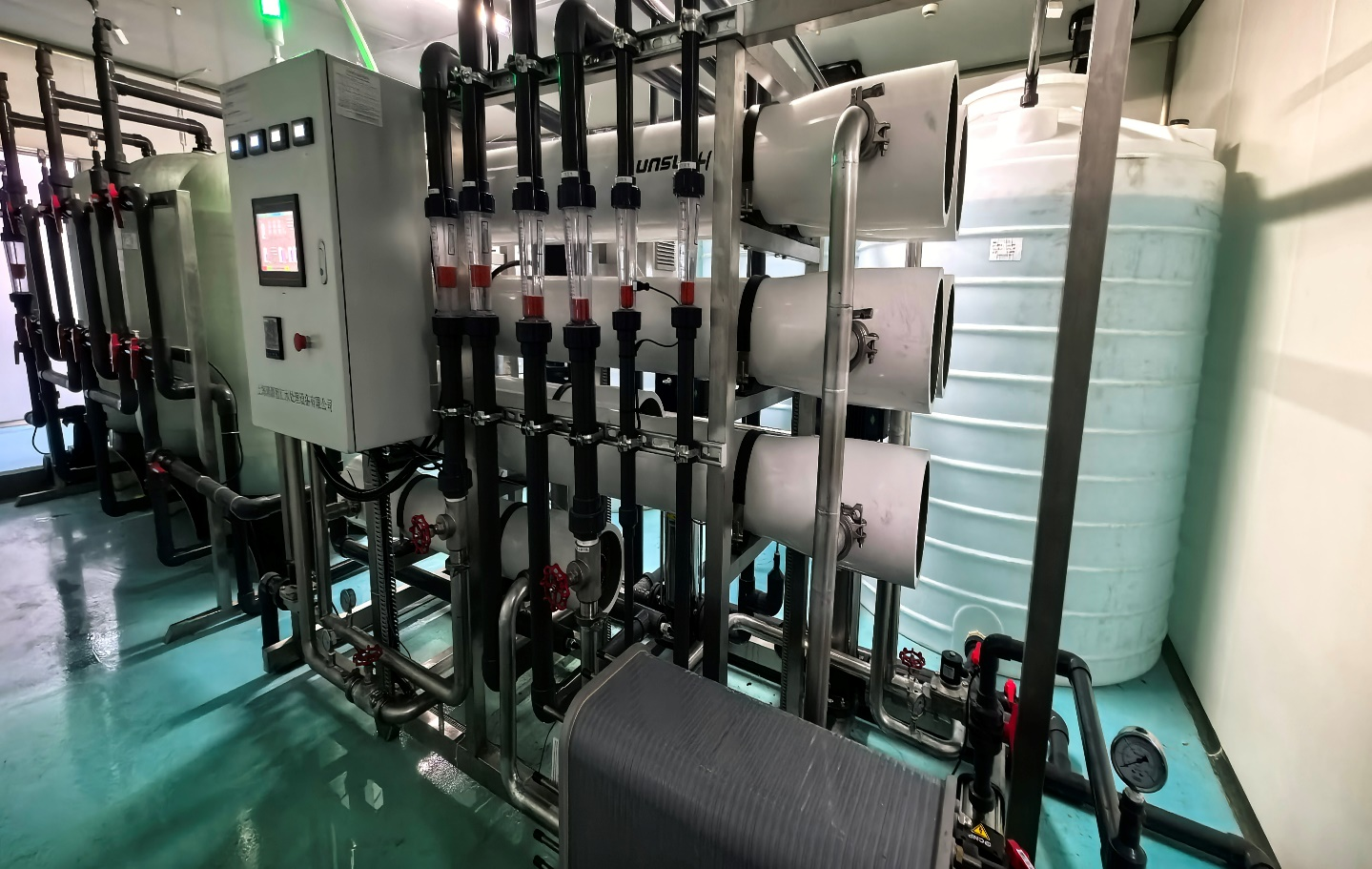
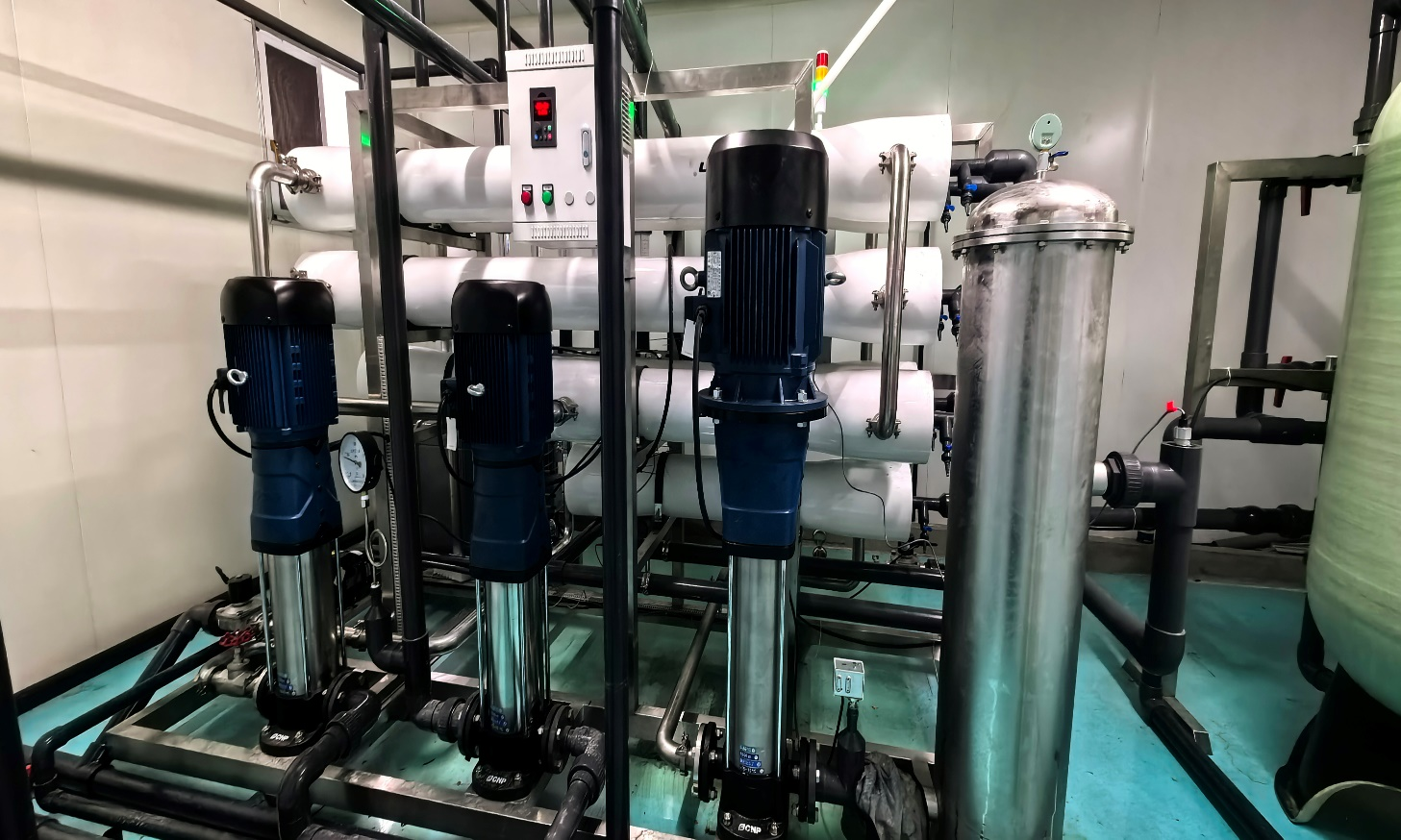
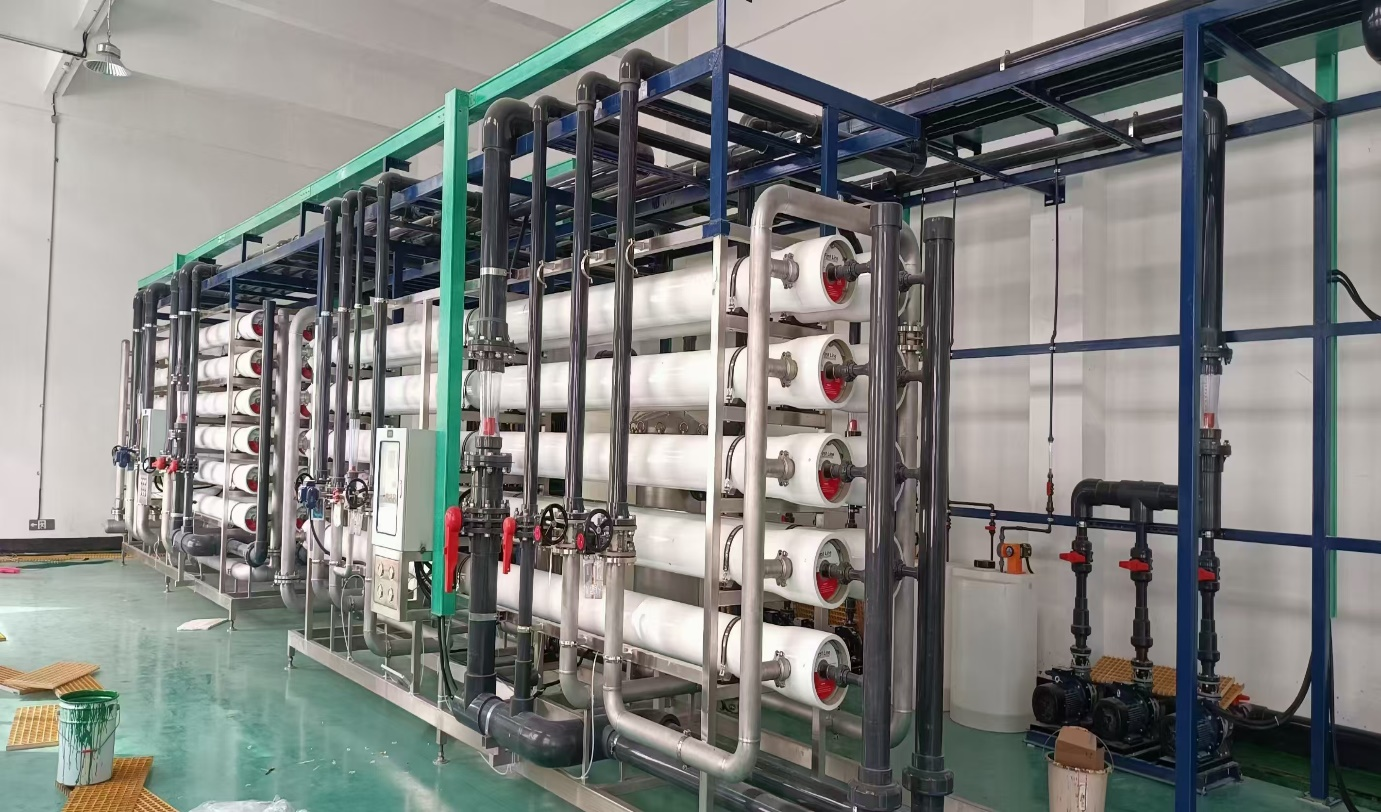
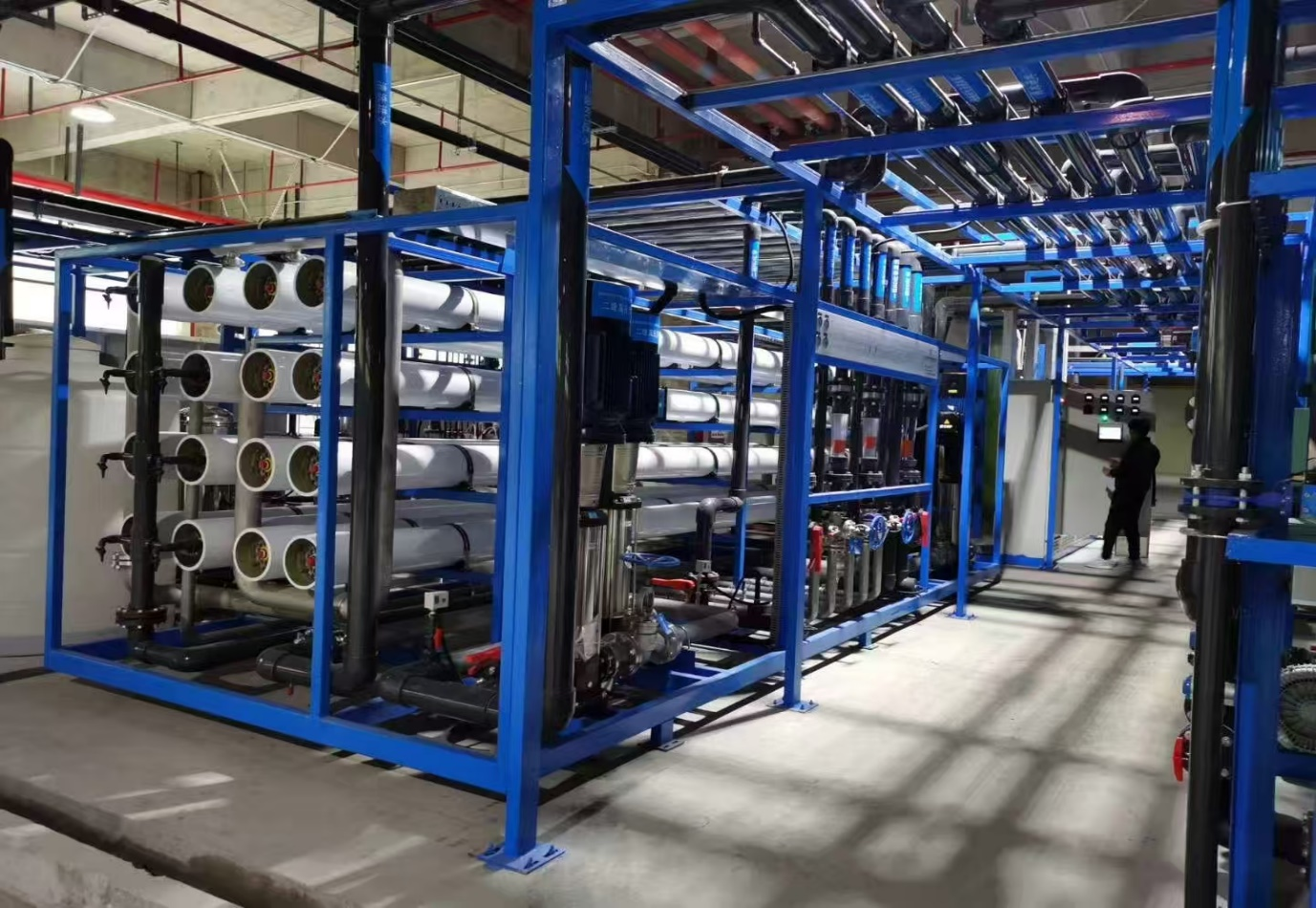
 ch
ch English
English




